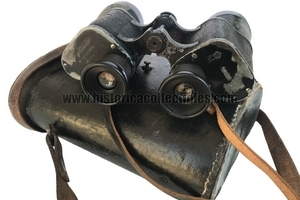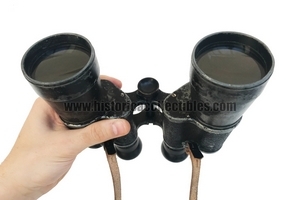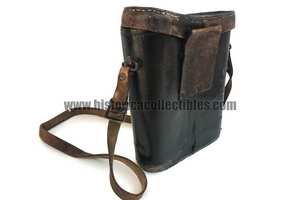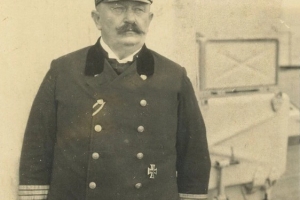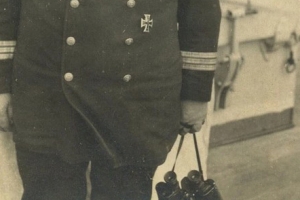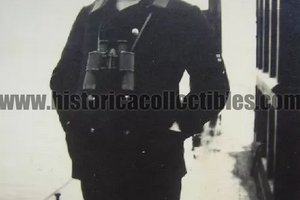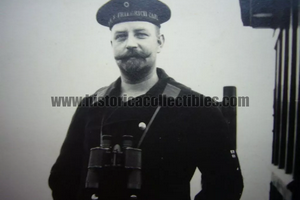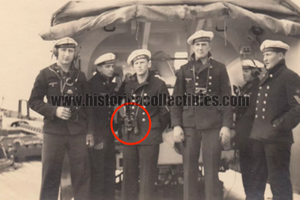Binoculars 10x50 Voigtländer Braunschweig Nirvana, Kaiserliche Marine, circa 1906
10x50 binoculars produced around 1906 by Voigtländer Braunschweig, to be destined for the Kaiserliche Marine.
On the left eyepiece plate there is the "Voigtländer Braunschweig" logo with the serial number underneath.
On the right eyepiece plate, in addition to the acceptance by the Kaiserliche Marine (Crown and M below) and the logo of the city of "Braunschweig" (the Lion), there are "10x50" and "Nirvana" enlargements probably relating to the model.
These binoculars were so functional and well built that period photos show that they were used throughout the Second World War. Its weight is 1.2 kg.
The vision is collimated and clear, the mechanisms work correctly.
History of Voigtländer:
Voigtländer Braunschweig was created in Vienna in 1756, the company took its name from its founder, Johann Christoph Voigtländer and initially produced optical instruments, intended in particular for microscopes and other scientific equipment. Among the first creations were the Petzval type lenses, and others destined to become famous, such as the Collinear and the Heliar.
In 1840 he built the first lens for cameras, while in 1841 the first entirely metal daguerreotype was developed. He subsequently produced plate machines, built in a practically artisanal way.
In 1849 the headquarters were moved to Braunschweig, Germany, where Voigtländer & Sohn was born shortly thereafter.
In 1925 it was purchased by Schering AG.
Voigtländer later oriented its production towards photographic devices accessible to all, and this allowed it to remain among the market leaders until after the Second World War.
In 1958 it was bought by the Carl Zeiss Foundation and in 1972 it was renamed "Zeiss Ikon Voigtländer".
In 1973 the brand became the property of Rollei until the crisis of 1982.
At this point the brand was bought first by "Plus foto", which from 1980 marketed Voigtländer cameras produced by Ricoh and Chinon and then in 1995 by "Ringfoto", but this represents more than anything else a long period of darkness.
Finally in 1999 the brand was reborn with the purchase by the Japanese "Cosina".

